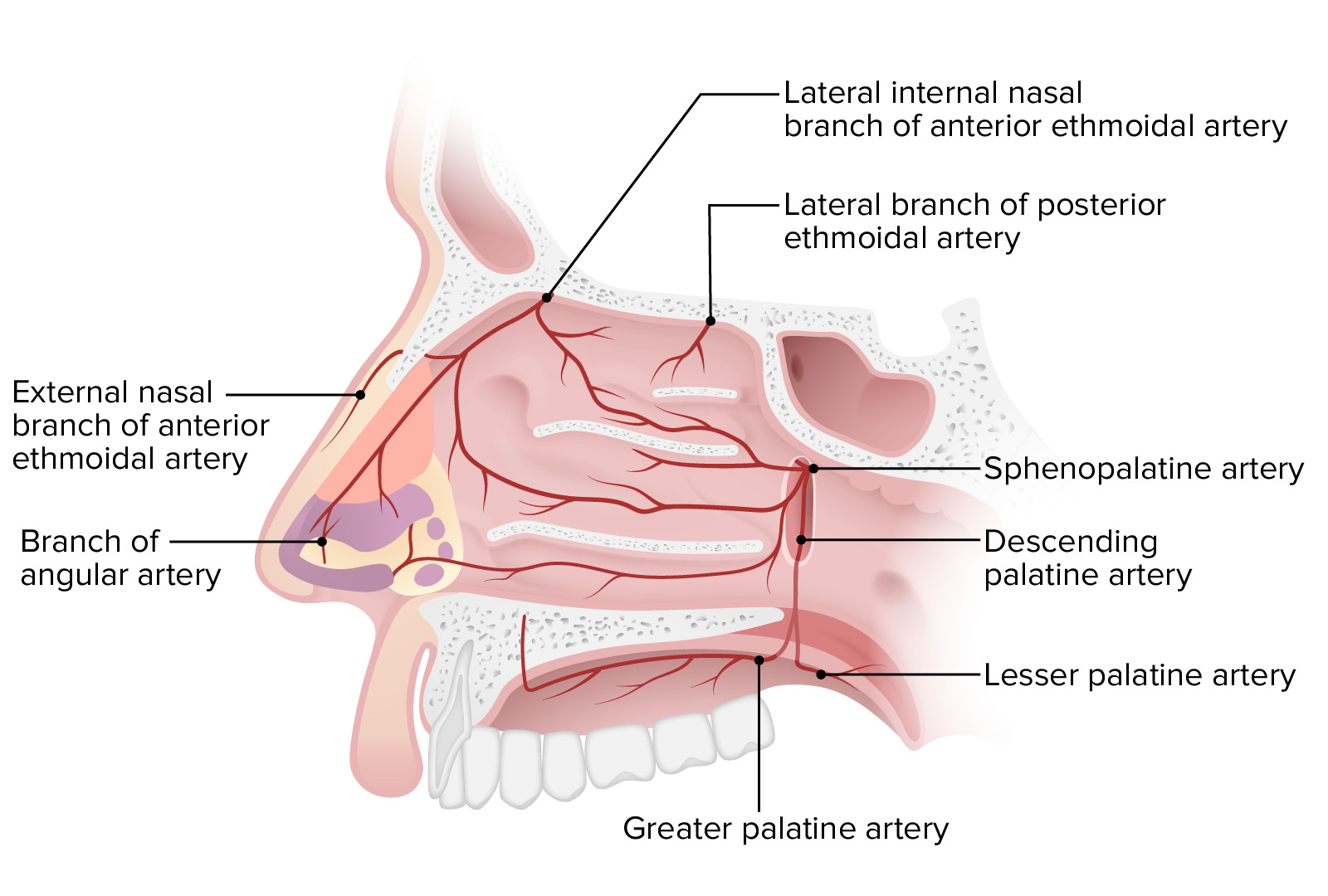Playlist
Show Playlist
Hide Playlist
Olfactory Mucosa and Olfactory Receptor
-
Slides 03 Human Organ Systems Meyer.pdf
-
Reference List Histology.pdf
-
Download Lecture Overview
00:00 that again warms the air as it pass through the nasal cavity. Let us now have a look at the olfactory mucosa. The olfactory mucosa contains the epithelium that detects odiferous substances that are dissolved in the watery secretions that make the surface of the cells and we will look at these in more detail in a moment. But their information is then carried back to the brain, through the olfactory nerve. The olfactory nerve consists of a number of bundles or fascicles of nerves rather one single nerve and those bundles penetrate through the base of the skull, through the cribriform plate of the ethmoid bone and those nerve fibres, nerve bundles are very very delicate. Sometimes if there is a brain injury or a cranial injury, the skull injuries, then when the brain moves as a result of say the momentum of the injury, then sometimes those little nerve bundles can get torn off from the brain, from the olfactory bulb and therefore the sense of smell disappears because of that. 01:13 Thankfully, these neurons, these special neuroepithelial cells are replaced by basal cells in the epithelium. 01:21 It is about the only place in the nervous system where neurons can be replaced naturally in the adult. Well, these glands, the olfactory glands are also very important. As I mentioned the odiferous substances are dissolved in the fluid secreted by these glands and that fluid sits on the surface of the olfactory epithelium. Let us now have a look at the olfactory receptor in more detail. On the left-hand side, is a colorful diagram explaining all the cell types including this receptor in the olfactory epithelium. On the right-hand side, is the histological section of the epithelium, you can see the olfactory epithelium labeled here. You can see the olfactory nerve that I mentioned a moment ago and you can see now the olfactory glands. All have important functions. But now let us look at the diagram and understand the type of epithelial cells that dominate this particular epithelium. Let us focus on the receptor cell. It is really a neuron and it is labeled there the olfactory cell. 02:40 It has a dendritic, one dendritic process and one axonal process. The axonal process as we've explained forms the components of the olfactory nerve and sends information all the way back to the central nervous system, while the single dendritic process has a swelling called the olfactory vesicle. And from that vesicle, from that dendritic process, a series of cilia extend along the length of the epithelium for at least 200 microns. They are very long cilia and they align parallel to the surface of the epithelium. Those cilia are going to contain receptor proteins for their different substances. There are also another group of cells there, it's the supporting cells that wrapped themselves around these receptor cells. 03:41 These supporting cells are really neuroglial cells because they are supporting neurons. 03:47 They have a very important function. If you look at the diagram, you can make out the representation of microvilli on their surface. One of the jobs is that the sustentacular cells or supporting cells do is not only be a mechanical and a metabolic supporting cell for the receptor cell, but they secrete the odiferous binding proteins. And these binding proteins move out into the watery fluid on the surface of the epithelium and bind to the dissolved odiferous substances and then transport those of the receptors on the cilia that I mentioned previously. 04:29 So they have a very very important function. And then you have the basal cells at the bottom. 04:36 They are the ones that can divide and differentiate into either the supporting cells or those special olfactory receptor cells that I've just described. You know there is one cell not present there that is called a brush cell. These brush cells, you cannot see them in sections, they are very hard to find, but they are present in the nasal cavity epithelium and the olfactory epithelium and they are present all the way down the conducting portions of the respiratory systems. They have a little tiny process that extends through their basal laminas or basement membranes and communicate with nerves. In the case of the nasal cavity, they communicate with processes of the trigeminal nerve, the fifth cranial nerve. And these brush cells are probably cells that can give some sort of sensory information about the mucosa back to the central nervous system. But as I mentioned before, you cannot identify these cells normally in normal histological sections. But they exist and they are important.
About the Lecture
The lecture Olfactory Mucosa and Olfactory Receptor by Geoffrey Meyer, PhD is from the course Respiratory Histology.
Included Quiz Questions
Which of the following statements about olfactory epithelium is CORRECT?
- Supporting (or sustentacular) cells synthesize and secrete odorant-binding proteins (OBPs).
- Olfactory receptor cells synthesize and secrete odorant-binding proteins (OBPs).
- Basal cells synthesize and secrete odorant-binding proteins (OBPs).
- Basal cells bind to odorant-binding proteins (OBPs).
- Supporting (or sustentacular) cells are stem cells that can give rise to olfactory receptor cells.
The olfactory nerves pass through which of the following cranial bones?
- Ethmoid
- Sphenoid
- Temporal
- Palatine
- Vomer
Which of the following regarding an olfactory receptor cell is MOST ACCURATE?
- It is a nerve cell with one axonal and one dendritic process
- It is a nerve cell with one axon and many dendrites
- It is a nerve cell with many axons and many dendrites
- It is a nerve cell with many axons and one dendrite
- Olfactory receptor cells are not nerve cells.
The supporting cells of the olfactory epithelium are analogous to which of the following cells?
- Neural glial cells
- Oligodendrocytes
- Microglial cells
- Kupffer cells
- Pyramidal cells
Customer reviews
5,0 of 5 stars
| 5 Stars |
|
5 |
| 4 Stars |
|
0 |
| 3 Stars |
|
0 |
| 2 Stars |
|
0 |
| 1 Star |
|
0 |




